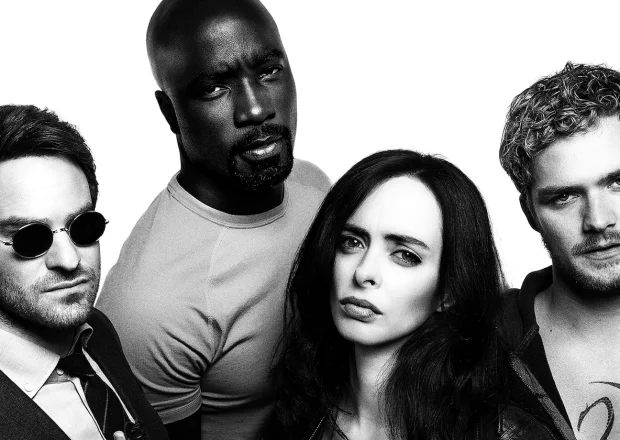What The Live-Action "Cowboy Bebop" Will Have To Nail To Be Acceptable
Netflix announced plans to produce a 10 episode season of a live-action Cowboy Bebop. The original innovative anime ran for 26 episodes and a movie, and ended its relatively brief story on a definitive note.
Set in the year 2071, humanity has recently left behind a scorched Earth to stake out civilisation on other planets and moons. Far from advancing the human race, the result ends up being a near constant state of lawlessness and decay across the galaxy, with no one really belonging anywhere. However, we only follow the crew of the Bebop, poor bounty hunters living with the scars of their troubled pasts. There’s Spike, an easy-going Cowboy (that’s what bounty hunters are called in this universe) and an ex member of a crime syndicate. He’s joined by Jet, a seemingly sensible ex cop who lives by an inflexible code of honour; Faye, a gambling-addicted con woman with no memory of her past; Edward, the youthful and oddball genius computer hacker; and the cutest welsh corgi in all of fiction, Ein.
To this day Cowboy Bebop feels like a bold and invigorating independent film. A funky hodgepodge of philosophy, westerns, film noir, John Woo crime movies, action buddy comedies, all fused together with generous doses of melancholy and tragedy, Cowboy Bebop hasn’t lost a bit of its vitality and originality since it was unleashed in 1998. It only makes sense that Netflix wants to get in on that cowboy action, but, given their poor handling of another acclaimed anime, Death Note, there are reasons to be sceptical.
But…but, if they get the following things right, there’s a chance it could be good. There’s nary a hope in hell it’ll be as impactful as the original, but maybe it could be good. So grab a plate of bell peppers and beef and hear me out (or, uh, read me out. Whatever).
The Music
Japanese composer Yoko Kanno did the music for Cowboy Bebop. It’s difficult to believe that there’s only one mind behind the show’s music, because it’s such an eclectic collection of jazz, country, blues, folk, heavy metal, and world music. And it all feels of the same piece, it all equally contributes to the unique flavour, the rich atmosphere. It’s the greatest sonic mosaic in any media, and you can quote me on that. I’m a pretty realistic person, I don’t expect they’ll even ask Yoko Kanno to do the composing, but the music absolutely must be varied and different from anything else on tv, no matter who they hire. In fact, you know what? I’m listening to this right now.
Do Away With The Typical Netflix Structure
Setting aside my issues with the plotting of most Netflix shows (Barring some exceptions, they tend to get doughy around the middle), what must not be forgotten is that Cowboy Bebop’s typical episode structure isn’t about contributing to an over-arching storyline. There are a grand total of 5 episodes that cover the “main plot” of Spike and Vicious’ feud. Sure, these episodes would rank in the top 10 episodes of any self-respecting Cowboy Bebop fan’s list, but the episodic nature is a part of the show’s aesthetic. It gives the distinct impression that these aimless losers are wondering through a dream instead of some tightly constructed plot that pays off in a Hollywood way. Making it a plot-driven bing fest with hour long episodes will only kill the free-wheeling vibe.
Keep the Mystique
The main characters in Cowboy Bebop are familiar archetypes who are fleshed out over the course of the series. This is typical. What’s not typical is the sense that in the show’s beginning, the most important events in these character’s lives have already happened. When we do learn about their pasts, we don’t get the full picture, only bits and pieces. And the crew of the Bebop would often encounter some strange situations and stranger folks that were beyond their understanding or even level of interest. There was room to speculate, to draw our own conclusions and it’s part of why the episodes have near endless rewatch value. Hopefully, the Netflix version won’t explain every damn thing, won’t holler at the cheap seats. Leave some things to the imagination.
The Tone Must Be Varied
“The Bounty Hunters, who are gathering in the spaceship BEBOP will play freely without fear of risky things. They must create new films and dreams by breaking traditional styles. The work, which becomes a genre unto itself, will be called…COWBOY BEBOP.”
This is the official manifesto of Cowboy Bebop. The writers and producers of this live-action version would do very well to adhere to that declaration of intent.
So those are just four of the things I’d like to see. I have little doubt that the production design — the gritty-‘70s-decay-but-science-fiction-aesthetic — will be faithfully reproduced. It’s highly probable it will be a well cast show. The surface will look right, I’m sure. But the essential creative soul of Cowboy Bebop is restless and expressive; it doesn’t find its inspirations in the obvious. If the live-action show remembers that, it won’t have to be as groundbreaking as its anime counterpart, because it’ll already have honoured the name.










